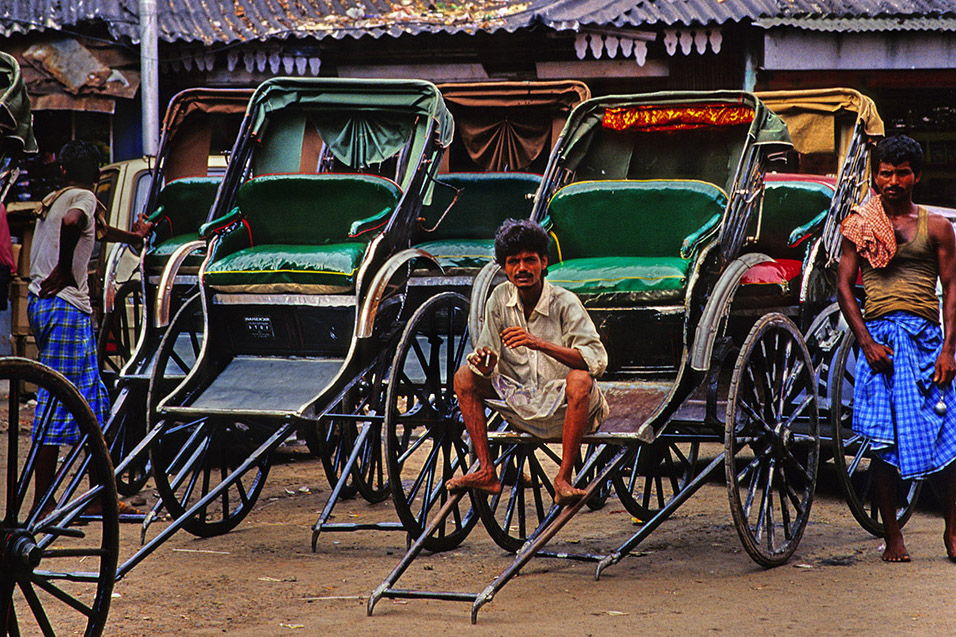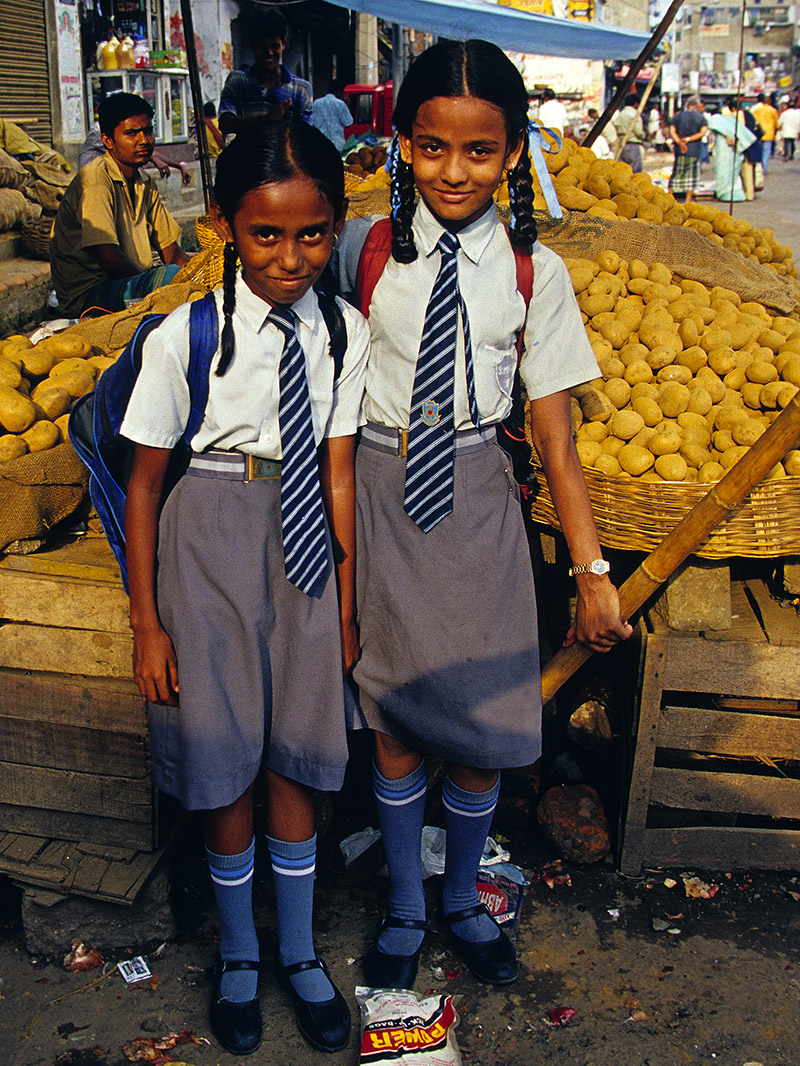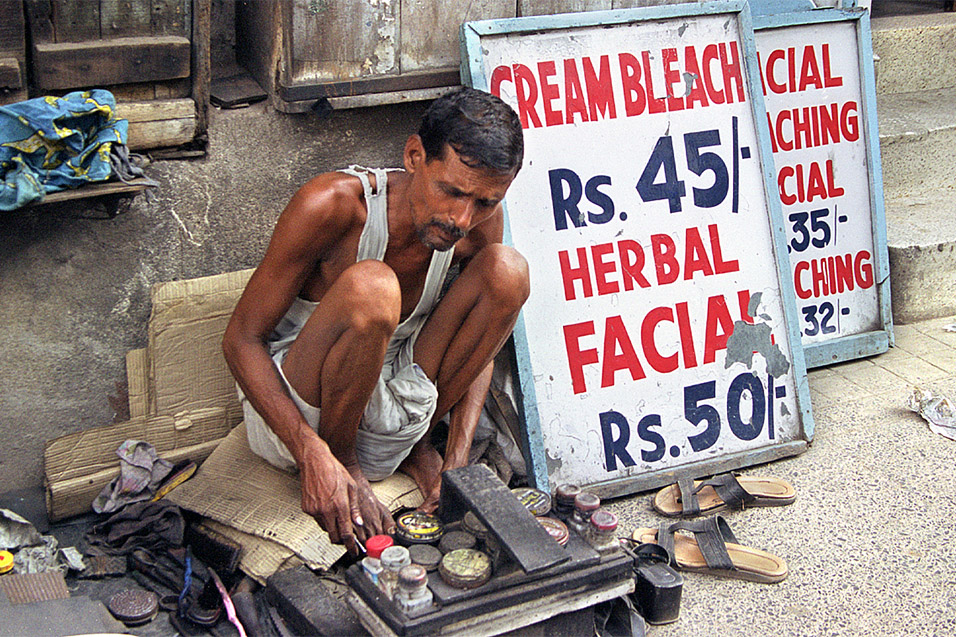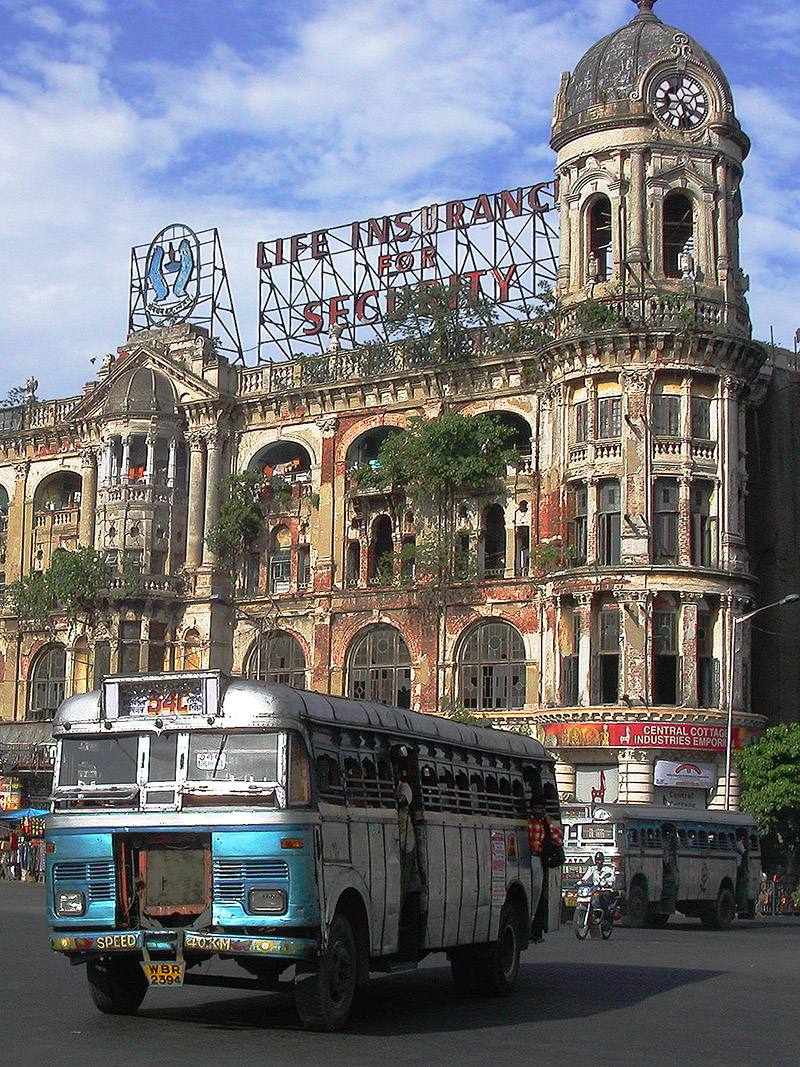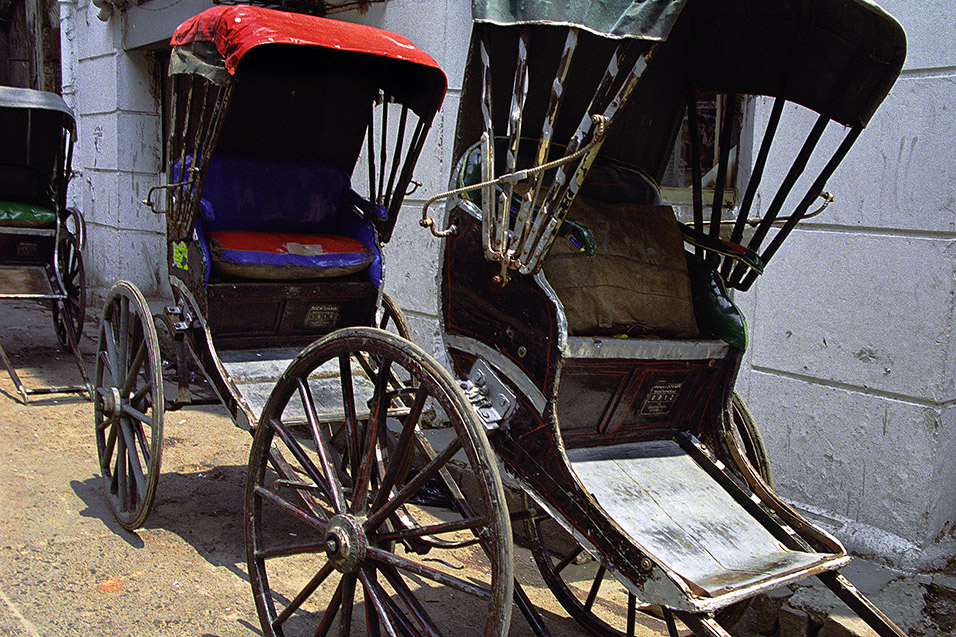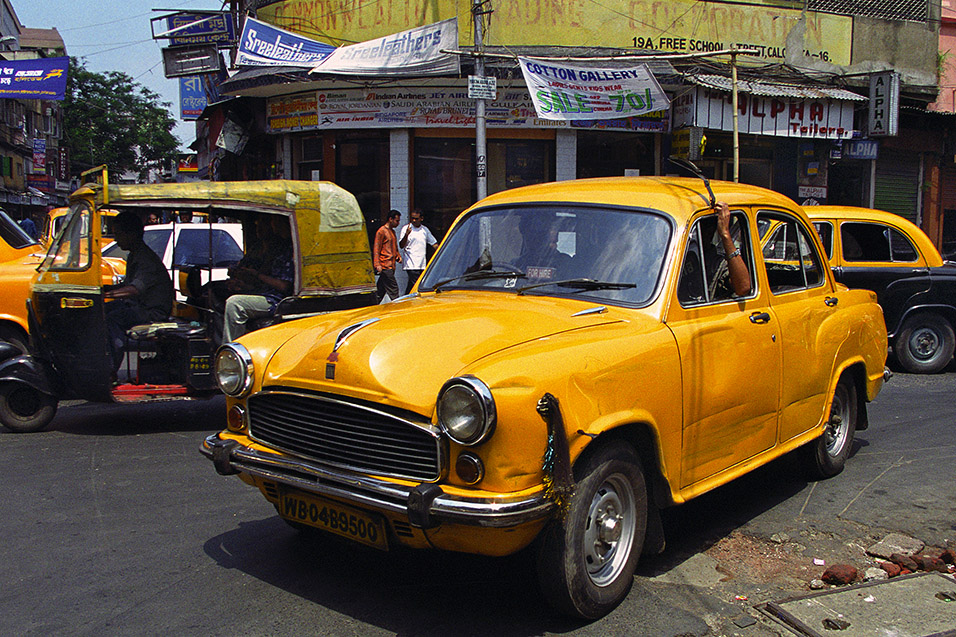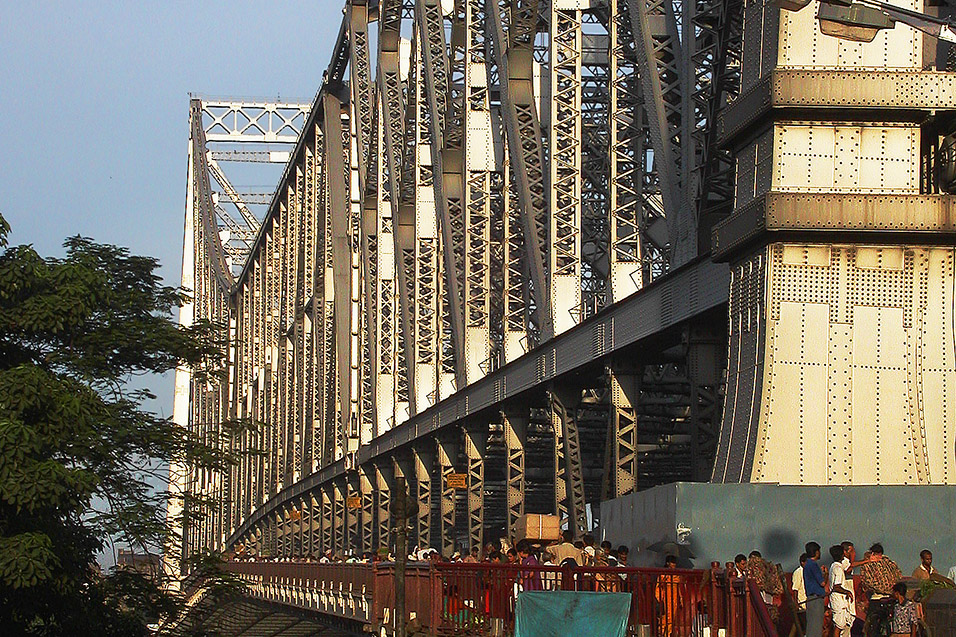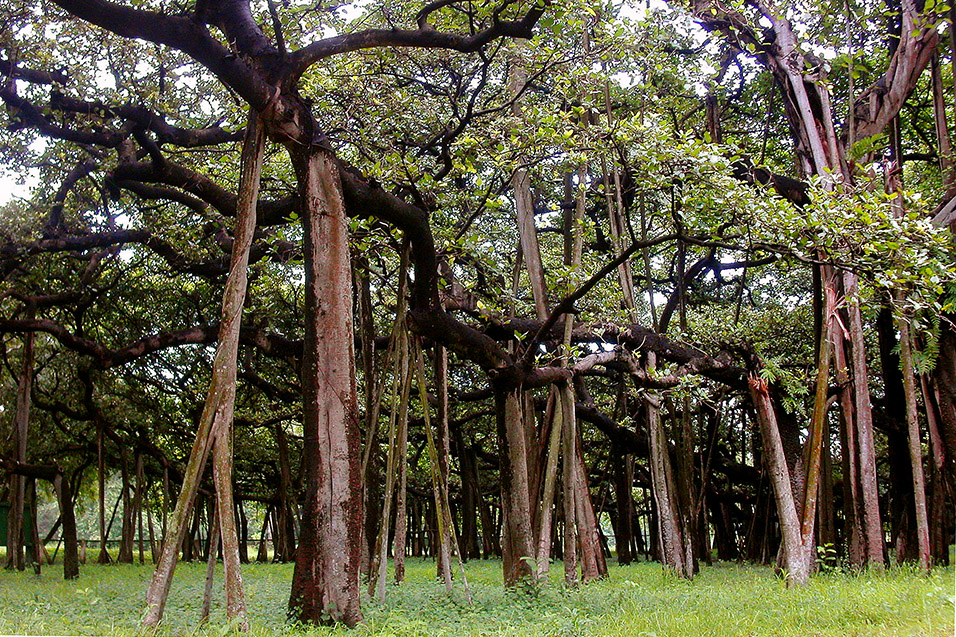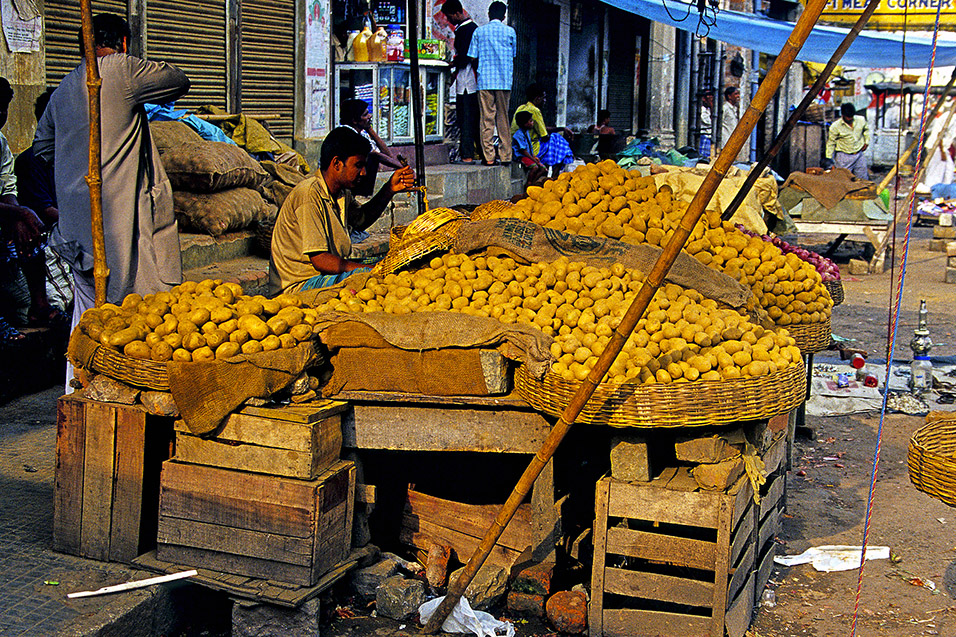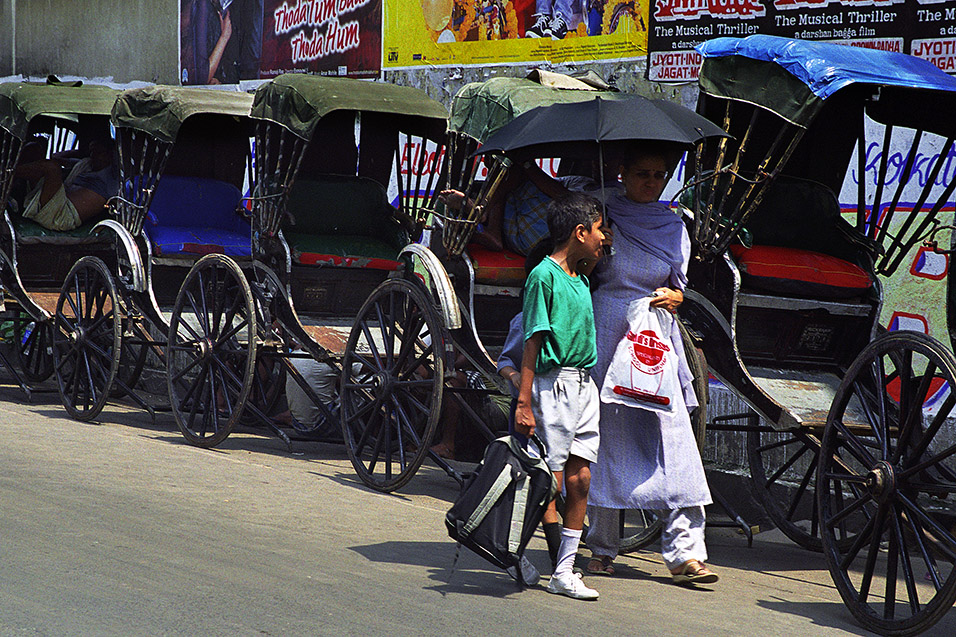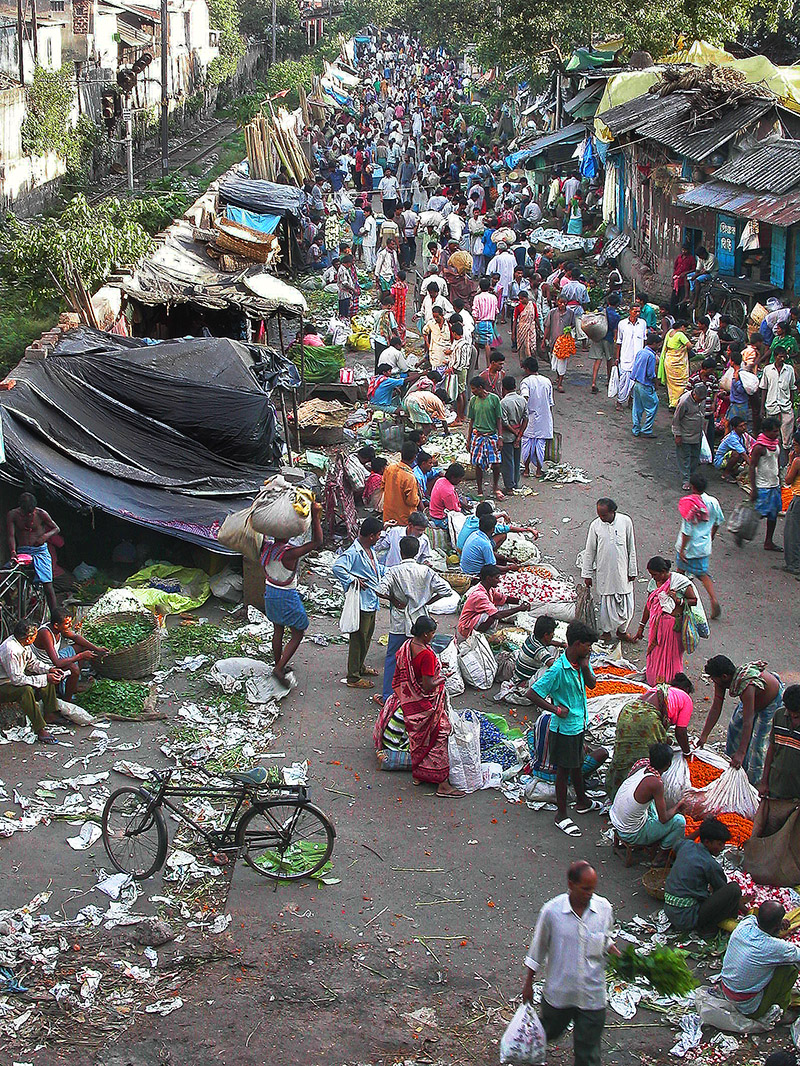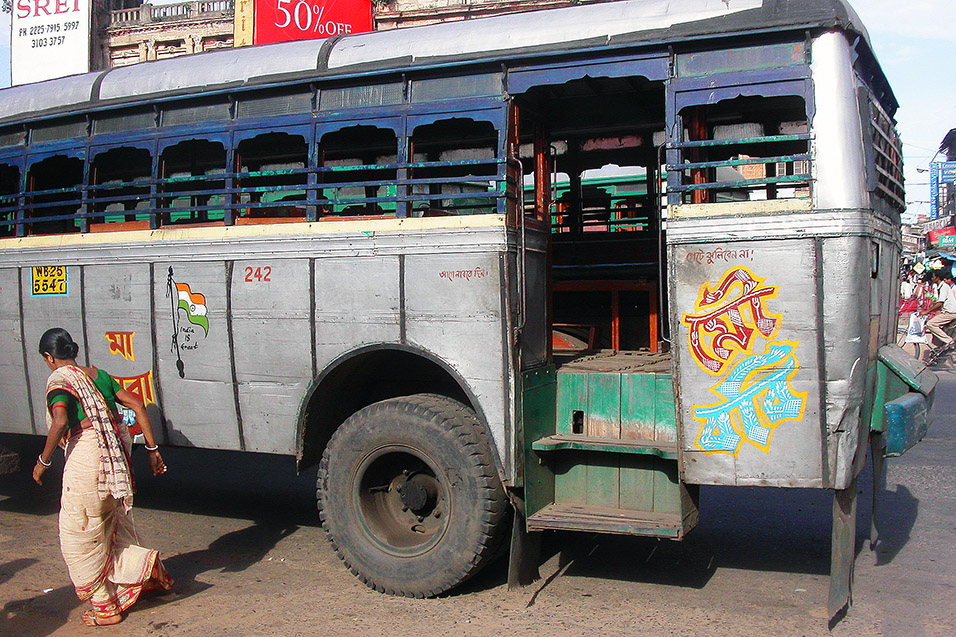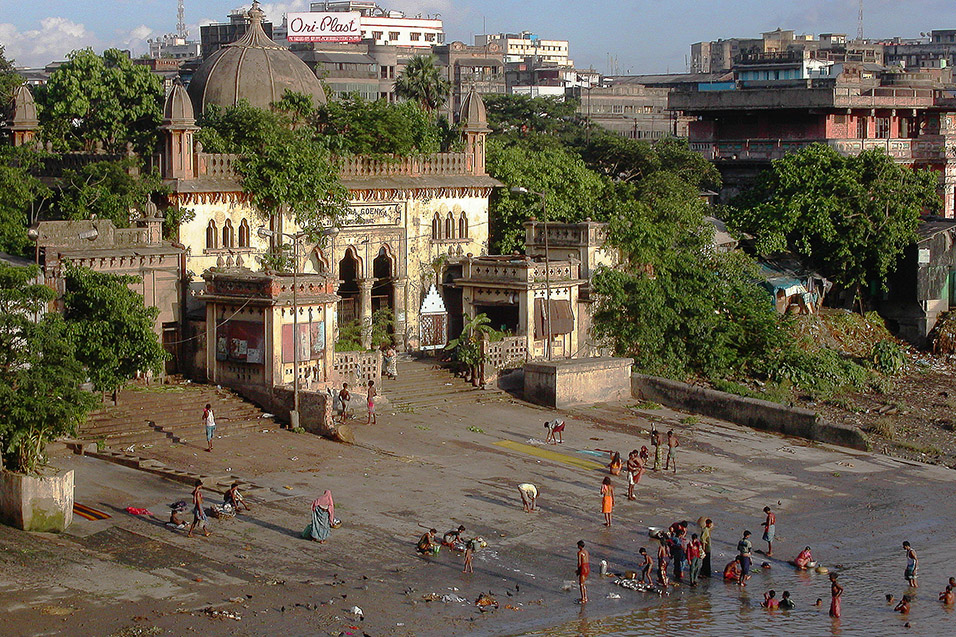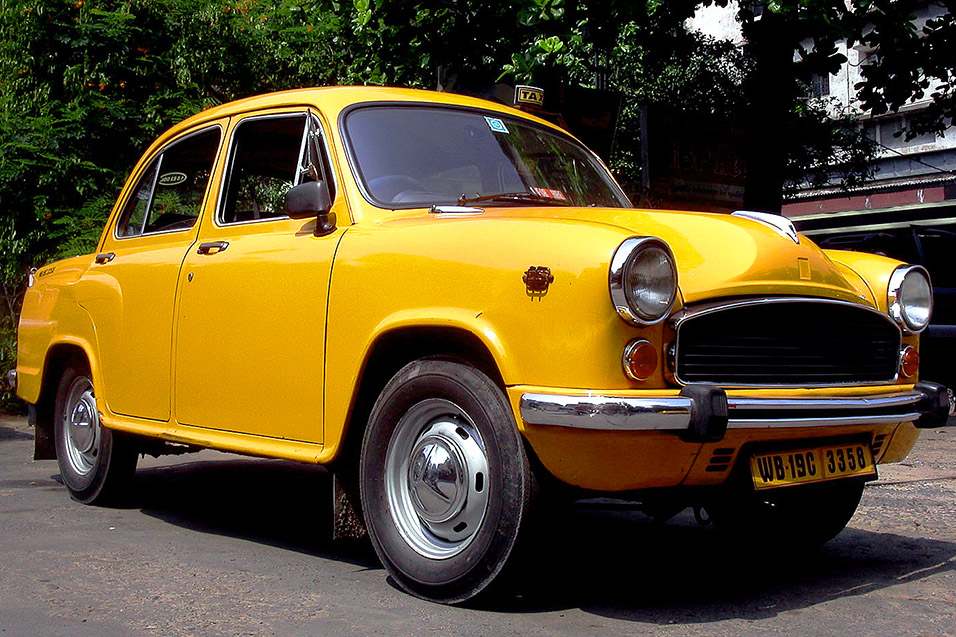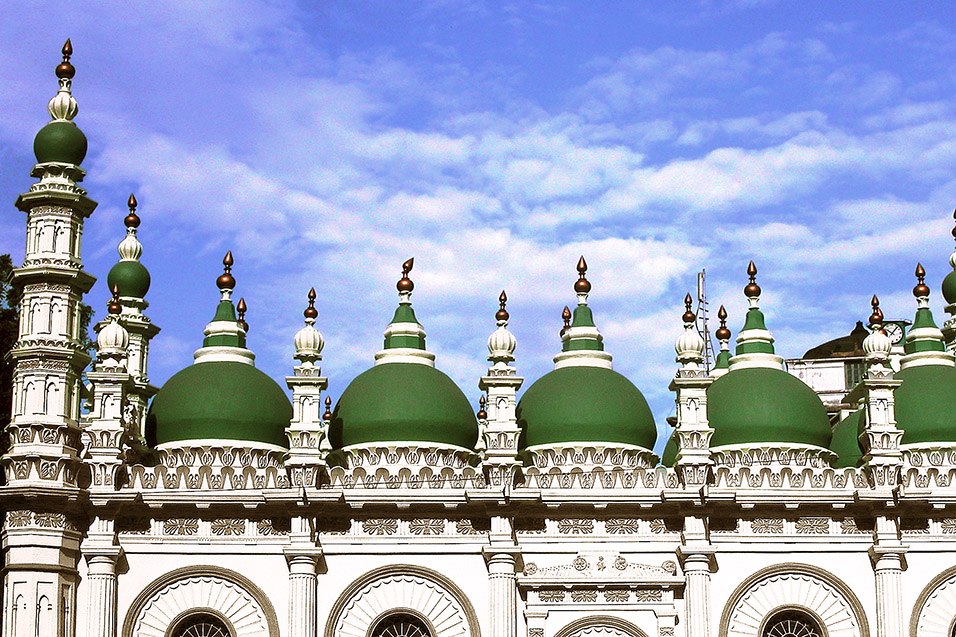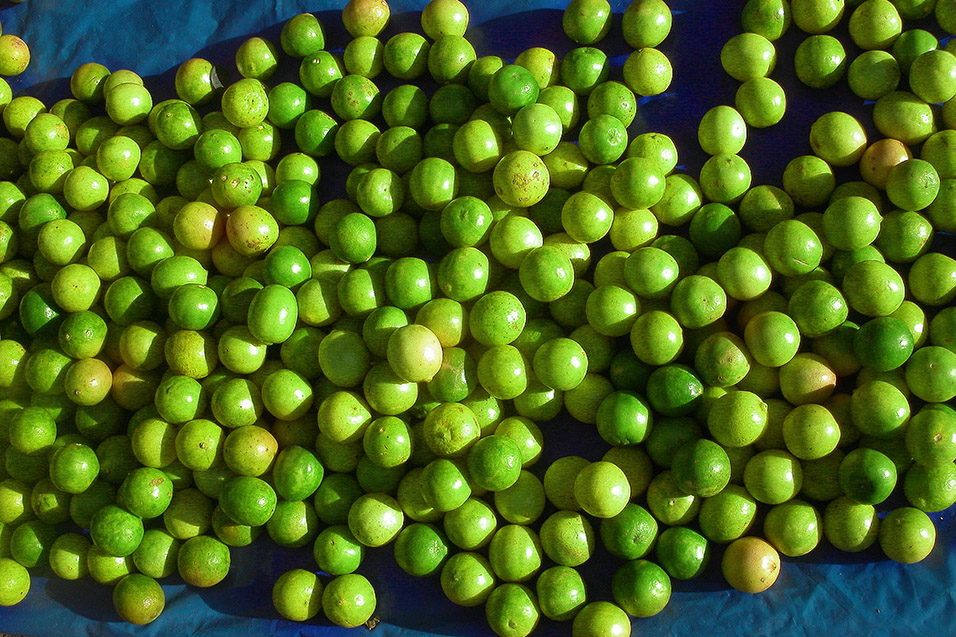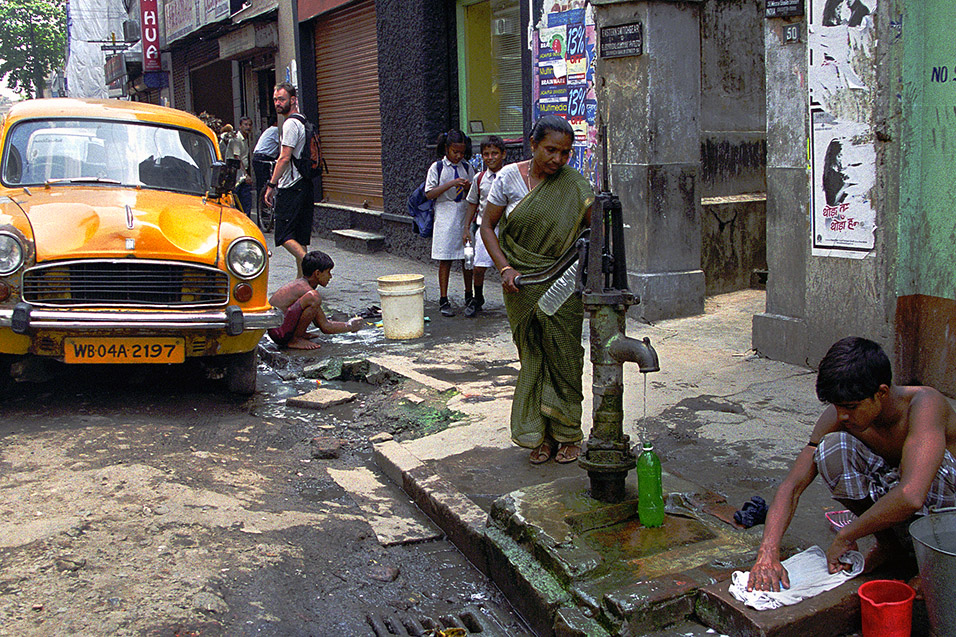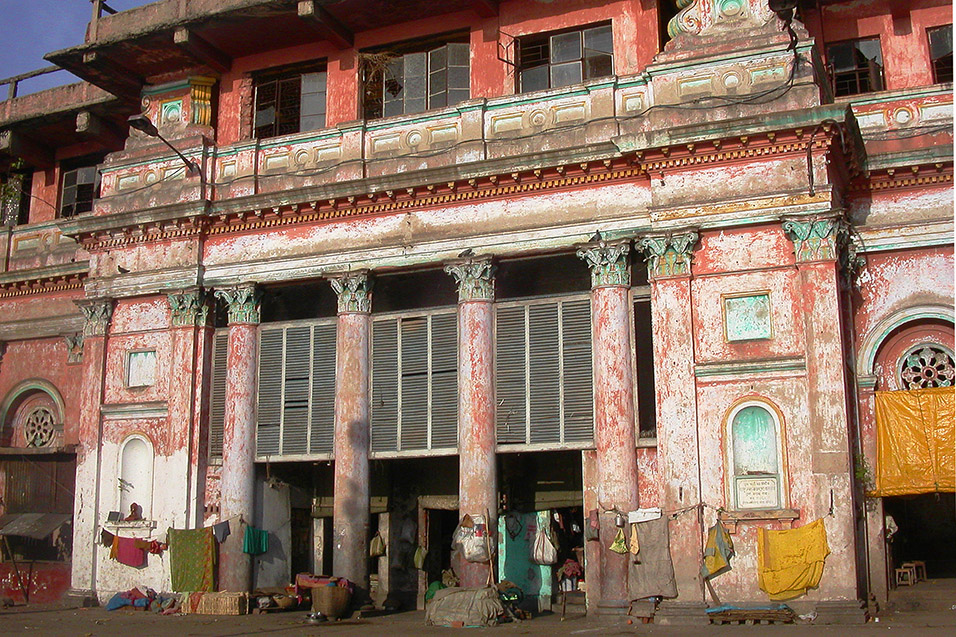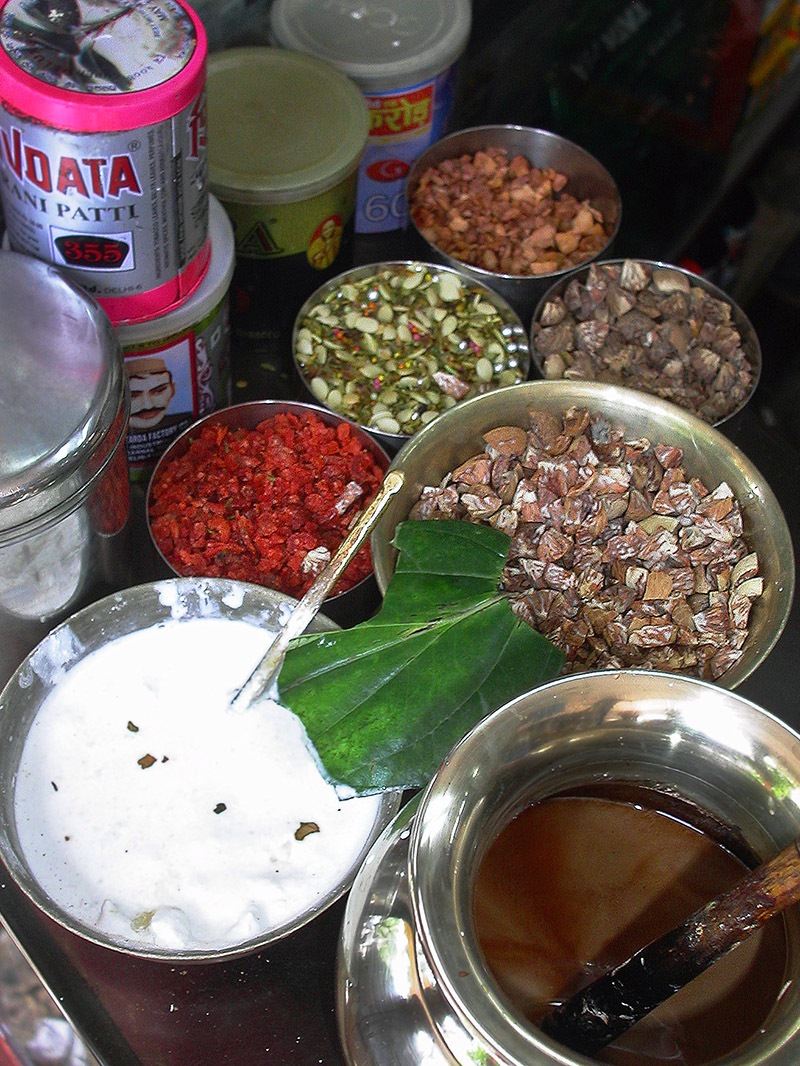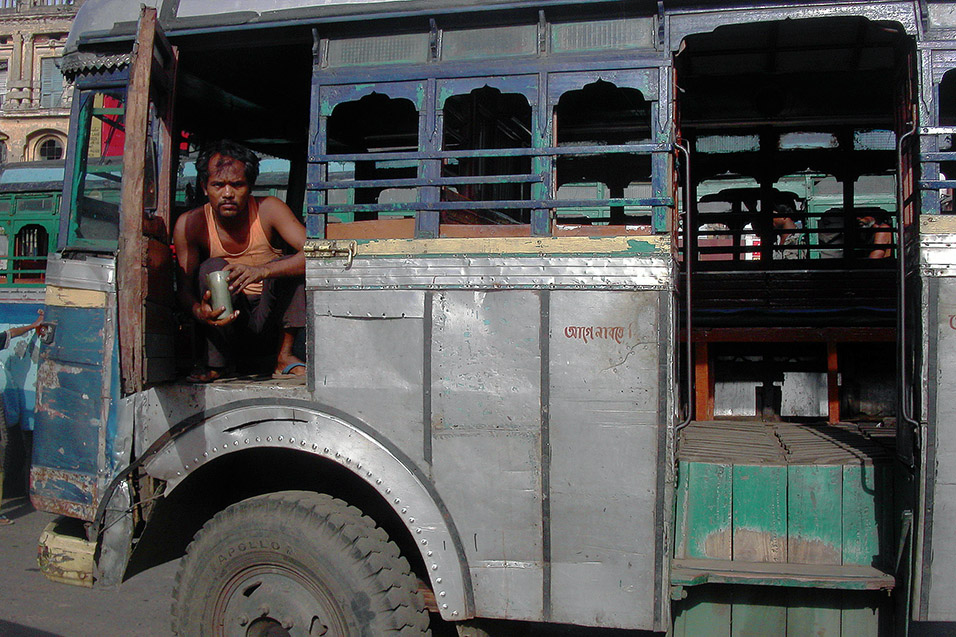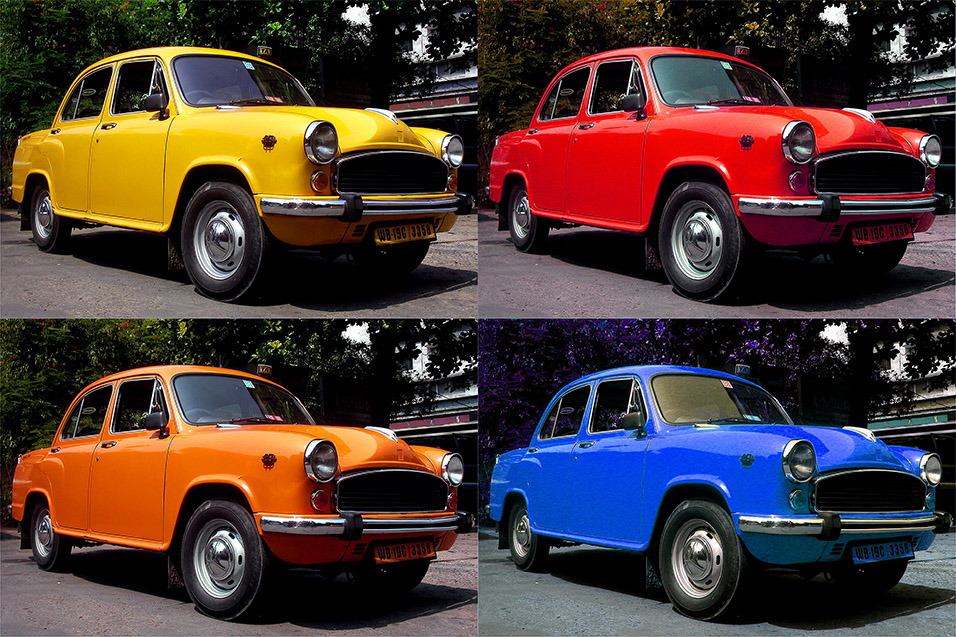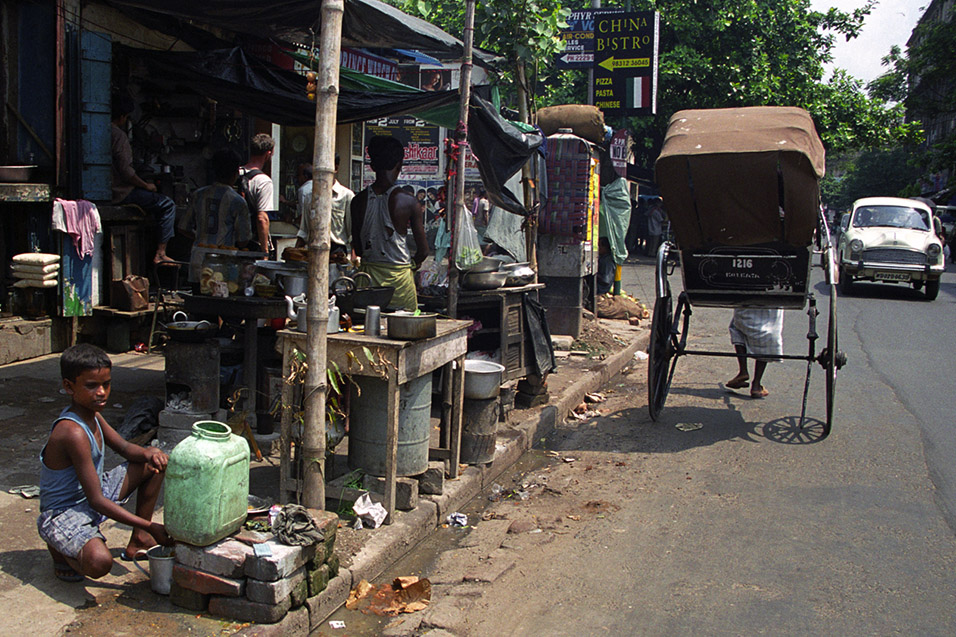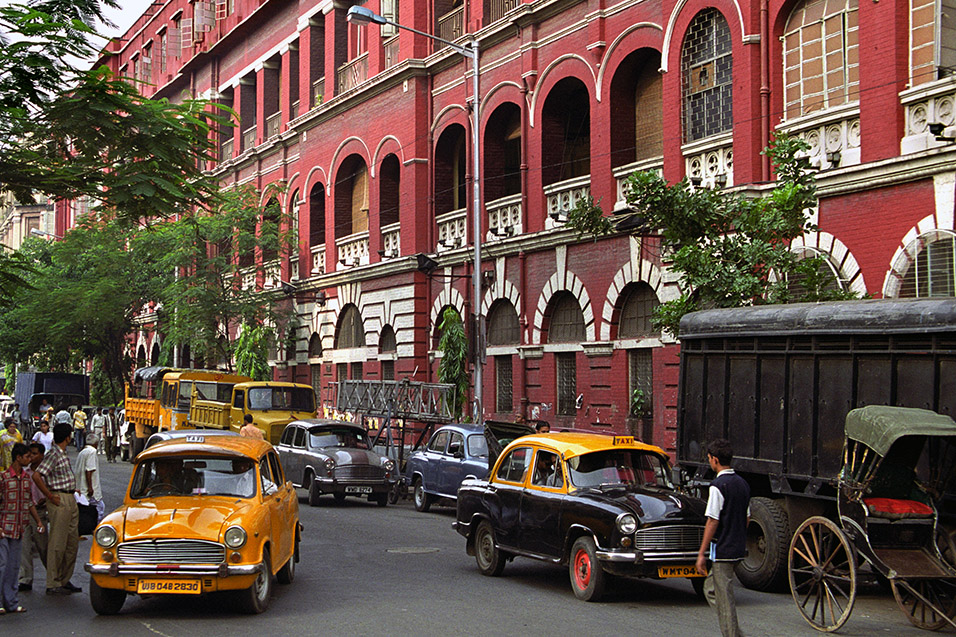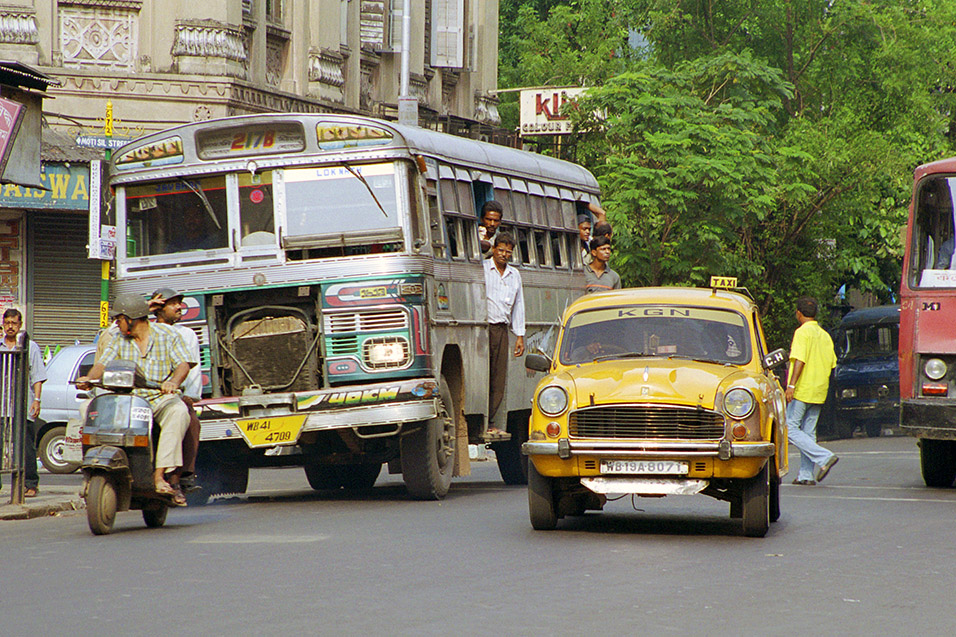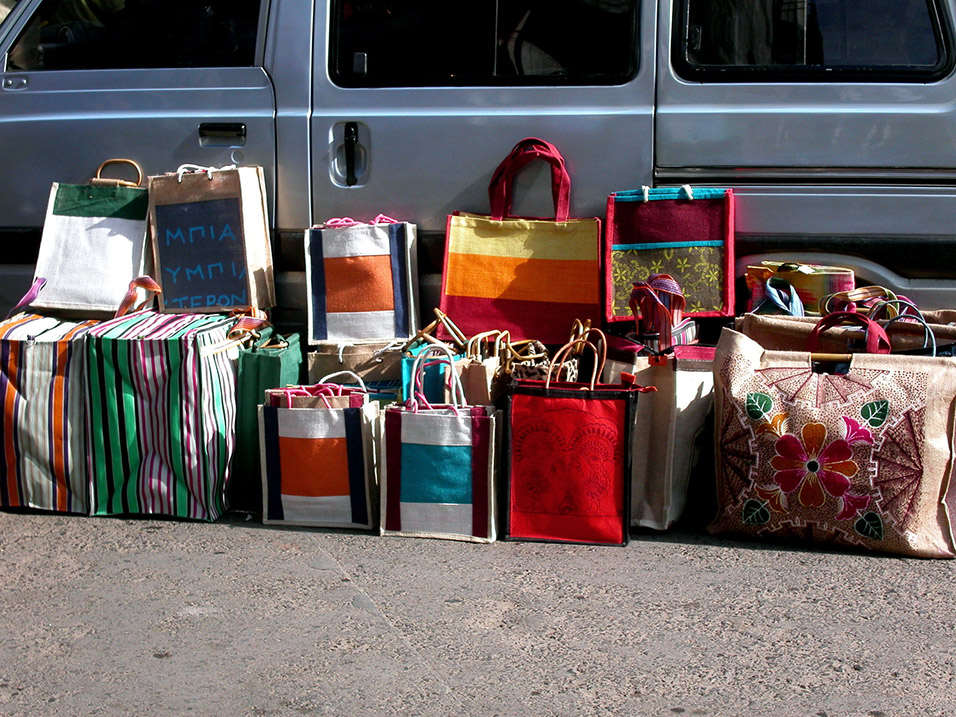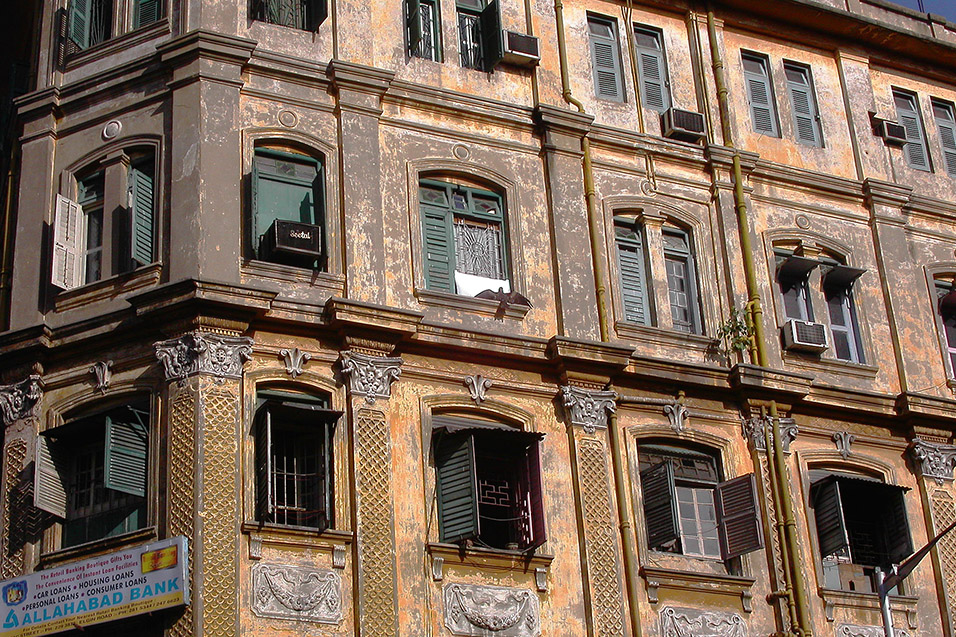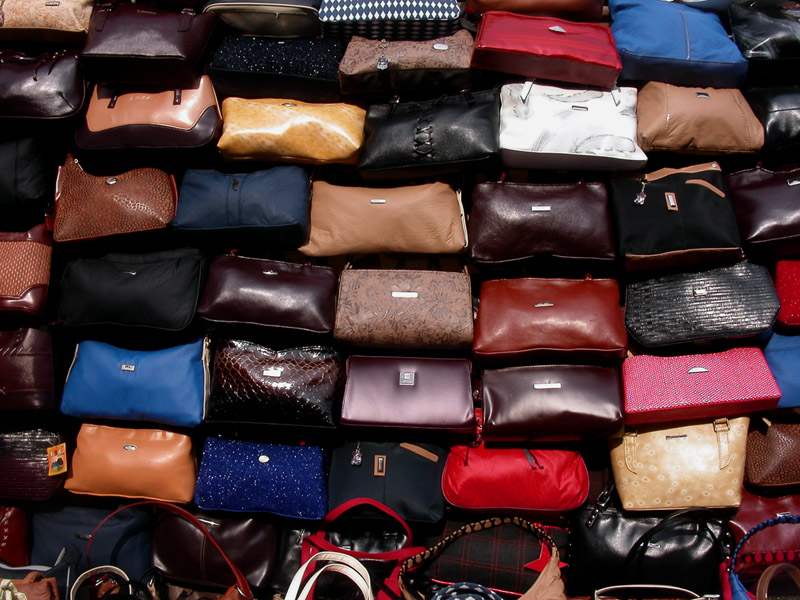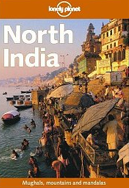
Thursday, 1 July — Kolkata
Quite possibly the most underrated city in the subcontinent, this place screams cultures, architecture, food, mustard-fish curry and music. And I like it! Even the Indians themselves regard Kolkata, formerly as Calcutta, as the cultural capital of India—and that is saying a lot considering how bulging-at-the-seems-full-of-culture India really is.
The vibe in Kolkata is quite charitable. Volunteers from all over the world are staying here donating time with various Mother Teresa organizations. People are smiling and feeling good, telling stories and helping those less fortunate. At the same time, I realize that most of this charity come from abroad— even Mother Teresa is of European decent.
It is in Kolkata that I first notice the looming effects of the caste system and how little respect Indians give to those of lower castes. Even though the caste system was illegalized some 50 years back, its unfortunate legacy still plays a vital role in Indian culture and hierarchy. The signs are obvious.
As I walk to my hotel at night, I hopscotch between hundreds of strewn bodies sleeping on the streets often times next to prosperous businesses and expensive hotels where folks are paying in one night what these pour souls earn in one year’s work. Skid Row. The street dwellers are literally trapped in their lives with no chance to move up the striated levels of Indian culture and society because of their caste. Untouchable. I question why the rich Indians (of which there are many) are not helping the poor and needy in the same way the foreigners are. Could the caste system provide the necessary excuse not to help others? Whatever the reason, I don’t like it. And it is here, just five days into India, that I begin to question Hinduism (in the same way the Buddha did) for implementing a system that dictates one’s life (dharma) before they are born and based on what family and caste they are born into. As one Aussie traveler said, “It’s bullocks, mate!”
People told me that coming to India meant having an open mind. I thought that mine was open, but I guess not enough. I will have to accept for now what I don’t understand and move on…
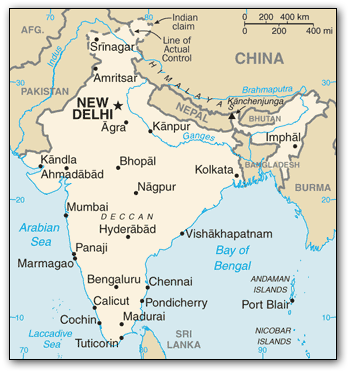
Sunday, 4 July — Bodhgaya
A six-hour, 2nd-class, non-A/C sleeper train with blue vinyl beds rolls me to Bodhgaya, a small and quaint town famous for one reason: It is the place where Buddha contemplated and gained enlightenment under the Bodhi Tree. As a result, Bodhgaya is the most holy pilgrimage site in Buddhism. Most Buddhist countries (Japan, Korea, Thailand, Taiwan, Vietnam, Myanmar, Sri Lanka, etc.) have religious embassies here in the form of temples designed and decorated in their local styles and customs. Having previously traveled to many of these Buddhist countries, I am able to tell what country the temples are from just by looking at their architecture. Hey, here is Thailand, and there is Japan, and over there, China (Taiwan) and what’s this? Bangladesh?… Wait, I didn’t know Bangladesh had Buddhists?? (Guess we learn something new every day.) The highlight of Bodhgaya is the central Mahabodhi Temple and its magnetic Bodhi Tree which grows from a sapling of the original tree of some 2,500 years ago. Amazing!
I, too, sit under the shade of the Bodhi for a bit and feel the high of divine contemplation. The gardens are beautiful and the air is clean. Although I find it impossible to empty my mind of thought, I still feel calm and content. As I leave the temple grounds with a buzz, beggars beg and hordes of young men push their trinkets and beads and incense and god-knows-what-else in my way. Having only novice experience in the art of patience (one of the fundamentals of Buddhism) I feel the peace in my soul begin to erode as I weave through the streets of chaos and demand. A 30-minute, 250-honk rickshaw ride drives my ringing ears to my westbound train.
Tuesday, 6 July — Varanasi
Famed Varanasi is the holiest city in the Hindu world and also the next stop on my Indian journey. Varanasi is the place where devout Hindus bathe in the Ganges River to cleanse karma and soul. It is also one of the most polluted places I have ever seen. Any bizarre and outstanding image you may have seen of people in colorful clothes on cement steps leading to a muddy river was probably snapped in Varanasi. And let me tell you, in real life this place is more bizarre looking and feeling and smelling and hearing and tasting than the photos we have all seen. After all, a place this holy has got to have extreme excitement— you won’t be disappointed.
Characters are abound in Varanasi. The majority are Indian tourists from all over the country (world) coming to purify. Then there are the pushers: market sellers, rickshaw drivers, store owners and touts— all hoping to extract as many rupees as possible from naive visitors. We international tourists are a minority and easy prey. Lastly, there are the Sadhus, or holy men. Around ghats (cement stairs) of the Ganges you will find hundreds or Sadhus sitting, praying, chanting and parading about. I am not sure of the origins of Sadhus, but I suspect that Indian culture has done something interesting to assist in its transient problem. Instead of housing or helping the homeless, India has instead elevated these people to the status of holy. Consequently, there are literally millions of people, mostly men, traveling the country’s holy sites on religious mission. These people own little and solve life’s necessities (food and shelter) on a day by day basis. Most are sincere as angels and really add color and memories to India. Others can be a bit misleading and even a nuisance at times. It is just then that I am attacked by a confident, head-wobbling, bearded Sadhu dressed in funky spiritual garb (head turban, robes and beads.):
Him: “Helllllooo my frieeeeeend! Would you like tour of city, burning beoble (people)? Massage? Music lesson? Rickshaw ride to see monkey?”
Me: “No thanks, I am trying to feel the vibe just here…”
Him: “But my frieeeeeend, come see my shop, looking is free.”
Me: “No, please, leave me alone, I’m trying to find some peace.”
Him: “But my frieeeeeend, why you no want do business with me?”
Me: “I am trying to take a photo and you are blocking my light.”
Him: “Oh, photo cost 10 rupee.”
Me: “Come on, leave me alone.”
Him: “And on right is ancieeeent Vishnu temple…”
Me: “But I didn’t ask for a tour or a guide.”
Him: “No problem, my friend, only 20 rupee, one hour.”
Me: “For fuck’s sake, would you please get the hell outta here?”
Him: “You bad man, you go home, you no like India.”
Me: “Oh, brother.”
(One great thing about India is that moment you enter the country, you have a billion new frieeeeeends.)
Varanasi is also the place where Hindus go to die, for dying in Varanasi is auspicious in that it ends the infinite cycle of reincarnation and ensures that the deceased go straight to Hindu’s version of Heaven. As a result, there are a lot of dead and dying people here. The dead ones are burned and their ashes dumped in the river. The dying ones wait. It is here that I see my first dead person, burning next to the Ganges, their soul releasing to the heavens. At one point the fire stoker nonchalantly rearranges the kindling of smoldering fire whilst putting some legs and feet next to a burning skull. Patches of smokey gray hair are seen among bits of blackened skull. Beyond the fire, ashes and flowers float in the Ganges River. And beyond that, Indians in robes and sari are chanting and dipping themselves in the holy waters of the Ganges. One elderly women, in a moment of diving sharing, suggests that I dunk as well; but I read my homework: The Ganges in Varanasi has such a high bacteria count that it can be considered a biohazard in scientific circles. I am not about to touch that stench. Well, actually, I do finger it for a second (for good luck.) I look up from the river and see dogs fighting, cows wandering, rickshaws honking, loud speakers blaring music at “11” , holy men praying, touts hassling, and no one minding their own business. It’s great.
The section of Varanasi next to the Ganges River is a maze of cobblestone alleys, decaying buildings, holy temples, jammed shops, throngs of people and curious cows. Having no where else to relieve themselves, the cows shit and piss everywhere. This is OK and all because the cow pies can be avoided, until it rains that is, and then when the rain stops and the drains clog, the whole city is covered in a fine film of mud-shit and every step you take is one that is in shit. And it is slippery. So I am slipping and skidding in shit for about two hours one afternoon rejecting offers for yoga lessons, food, film, etc. when I come across a dead cow laying on it side (in shit no less) with a deflated pink tongue hanging from its mouth and blank eyes staring into space. I inquire. One woman replies, “It is a tragedy, but at least it was male.” (Males don’t produce milk— a prized Indian staple.) Another man informs that the cow was hit by a car (even though cars couldn’t pass in the alleyways.) Someone else comments that the beast must have tripped and fallen. Another bright guy suggests that the cow has suffocated from plastic buildup in its intestines. Whatever the case, a makeshift altar is set next to the cow and the corpse is covered in a golden sheet decorated with red Hindi blessings. People are placing rupees (Indian money) on the cow and burning candles and incense and mumbling prayers. It is obvious that this is a big deal. I too sigh, for an Indian cow has fallen… well, at least it was male. I walk on. In two minutes I see an old woman crouched and begging in the gutter; her thin and dark sagging arm extends from a filthy white cotton gown while natty gray hair covers her shoulders. No one gives her money though, or food, or candles, or blessing. She gets squat. I remember Hindu’s clever caste system: This woman’s life is determined from the outcome of karma in live’s past. Guess she was a bad egg last time around. I look back at the dead cow and simply nod in disgust as I toss the hobbled woman a bill.
I head on to a Hindu temple, but a sign in front informs: “Hindus Only.” I do a U-turn and then veer back towards my hotel, the Vishnu Rest House. I pass a procession of 20 people carrying a corpse wrapped in cloth with holy blessings. The group is heading to the Ganges. As I watch the spectacle, some weirdo grabs my left arm, recites a prayers and starts massaging my hand. Well, guess I am getting an Indian massage. Suddenly, I am laying on an old wooden table on a ghat next to the Ganges with a scraggly holy man giving me physical blessings. The tension leaves my back while a Japanese guy videotapes me. Video camera = wealth. I laugh because several touts are aggressively hassling the poor Japanese guy, getting in the way of his lens and making him shrug them off the way I head earlier…
What a classic couple of days! As we leave for the trains station, all the people that had been bugging us the whole time suddenly become solemn:
“Goodbye!”
“Hope to see you again!”
“When you come back?”
“Varanasi misses you… ”
I have to admit, it feels good, and I instantly forgive everyone and everything that messed with me, and my smile gets bigger and better. As we ride through town ancient music is cast from speakers hung all over the city. The traffic increases, horns are honking, but I am in a good mood and this becomes one of those moments that I will never forget. :)

Sunday, 11 July — Agra
Affectionately known as Agra-vate, this is the place of the Taj Mahal, 17th-century Mogul forts, markets, smog, alley mazes, hassles and horns, horns, horns. It is here a couple years back that several Indian restaurants deliberately poisoned their patrons food in order to take them to overpriced medical services. It is also here that one of the world’s most magnificent buildings stands: The Taj Mahal was built for love (and the insanity that love festers.) You’ve seen it a hundred times on TV and in magazines, and I have to say, it looks better in real life. Go see it, but just get there early, like I did, before the thousands of other people do, and bring water— they sell none inside and it is HOT.
Tuesday, 13 July— Rishikesh
What a lovely place, what a lovely face. I was told that Rishikesh is the disputed Yoga capital of the world, the Santa Cruz of India, a great spot to chill for a bit, and a place where the Ganges is clean enough to swim in. Sounds great for a couple of days rest…
What I wasn’t told is that July is the WRONG month to go to Rishikesh. Not only are most of the yoga centers closed for hiatus, not only is it burning hot, but instead of spirituality, I get the Vishnu Festival. Sounds cool, doesn’t it? Yeah, right. The Vishnu Festival is the time when literally millions of Indian country men travel to the Ganges River and collect its waters to take back to their villages— all in the name of good karma. Every town on the Ganges becomes a target, and Rishikesh is now enjoying about 80,000 20 to 30-something, testosterone-pumped, head-wobbling, pot-bellied, tanktop-wearing, quazi-spiritual, stinky male freaks ALL DRESSED IN ORANGE. Let me repeat, orange is everywhere. Gigantic carrots scurry about town getting in the way of everyone else. I really enjoy the scene for a bit and feel India more strongly than ever. One problem: Many of the men are riding loud, antiquated motorcycles and all of whom are constantly honking their horns in celebration. I have never, ever, never, ever, never, ever, never, ever, ever ever ever experienced more horn honking in my life. And it is this day that I decide two things: (1) Noise pollution is the all-time worst pollution (well other than radioactive waste); and (2) I am going to invent a portable horn for pedestrians to compete with these bastards on bikes.
What is even more traumatic is that all of these Vishnu goers have cameras, and they are all adamant about me being in their photos. Once one group of people and me finishes a photo shot, another group comes up demanding my presence. Sounds flattering and all, but after three days of honors, photos, horns, orange people and no yoga, all I want to do is escape to the hills. I heed my desires and go on hike with some cool Israeli girls to the river. As I am loving the brief female energy, suddenly, out of the bushes comes 30 orange men wielding cameras screaming, “Photo, my friend, pleeeeaassse, one photo!” There is NO escaping here, so we flee and return to town at dusk. Of course the migration fills the hotels so the moment the sun goes down thousands of orange bodies lay strewn in every available public horizontal space. It is utter and complete bonkers and in contrast makes a Grateful Dead show seem like the offices of an insurance brokerage.
All in all though, Rishikesh is a superb place and deserves the journey there. Just don’t go in July.
Sunday, 18 July — Delhi
The capital of India and one big circus. Everything in Delhi is BIG: Huge cows, massive Asian elephants that I swear are larger than their African counterpart, tremendous pollution, gargantuan crowds, tumultuous traffic jams, honkedy honking honks, and mind-jarring hassles from enormous, potbellied, head-wobbling men. All men. Men everywhere. Man, where are the chicks in this country? I thought it was religious Muslims that forbade their women from going outside. Guess not. India is just as sexually oppressed. The thing is though, when I see a woman here, she is often dressed in the most colorful and intricate sari and looks stunning. Wish I could see more… No pun intended.
It is in Delhi that I begin questioning the rational behind India’s preference to develop nuclear weapons over maybe improving the subway, or God forbid, repaving some of the streets in its capital, or how about sheltering some of its citizens, or building more schools? Yes, Delhi, if given the chance, has many awaiting gems. But, come on India, this is your capital, your pride and glory… Make it shine. Right now it stinks.
Sunday, 18 July @ 9:09P — Email
Subject: Greetings from The Circus…
Dearest Family and Friends (old and new)…
It has been a while since the last Brian email— the days just slipped by; but I have some good news— the passage to India is complete— I have been in the country for about 18 days now, having crossed the border from Bangladesh into Calcutta. It is raging full-on here and all my senses are overwhelmed to the point where I am just starting to grasp just exactly what is going on here. I guess I didn’t quite know what to expect, and maybe I even over-romanticized a bit, but let me just say that India really is THE epitome of adventure world travel. I affectionately call this place “The Circus" because the moment I step out of my hotel gate there is no telling what will happen. Most likely though it will entail a rickshaw ride (or other mode of transport) and involve me zigzagging obstacles including monstrous trucks, smoke-belching buses, gigantic potholes, sacred cows, feisty dogs, lazy goats, sadhus (holy homeless people), banana and mango carts, etc. And to avoid all these dangers my driver will incessantly honk his horn every 5 seconds. The smells we pass on the way will include aromatic incense, sulfuric sewage, burning plastics, musky sweat, and cow shit. Yes, there are cows everywhere. The road will be bumpy and send vibrations that rock my brain against my skull and bruise my kidneys. To sum it up, I realize that India is Heaven and Hell rolled up in a ball with sweet and sweat delivered to you with humor and a HONK. Frankly, you just have to laugh here, any attempts to do otherwise would either kill you or place you on the next jumbo-jet home. Sometimes I think this is the worst place and other times I love it and feel I will be bored back in the USA, but all in all I am happy I am doing this now. I realize that I am not exactly here for pleasure, but that this is one of those places that I have to explore if I am to truly understand the world. 1/6th of our brothers and sisters are Indian, after all, and for as much chaos they give us with, there also comes magic and spirit and hope and tolerance beyond imagination. India demystified.
Oh yeah, the FOOD. Let’s just say that culinary mastery exists here that could tantalize any eater— let’s just hope that diarrhea isn’t included on the menu— and it hasn’t been so far (knock on wood, three times.) Let’s see what will happen.
Thursday, 22 July — Manali
After meeting up with my buddies (Jonathan, Michele, Mike and Kim) we overnight bus it to the heart of the Kulu Valley to a town named Manali. The Lonely Planet says that this place is in the “foothills” of the Himalayas. Foothills, shmoothills! These babies are monstrous, snow-covered mountain peaks dividing green valleys that are more grand than anything I have ever seen. Our hotel faces west and overlooks the whole valley for miles. What a view! I sit on my balcony for hours playing guitar thinking I never want to leave.
The next morning we hike five miles through the lush valley. It is hilarious because Manali is not only famous for sheer beauty— it is also famous for millions of wild growing hemp plants. Practically every weed is weed. Not smokeable, but very green; and we can’t resist taking reggae-album-cover photos every time we pass 15-foot high fields shimmering and stinking in the sun. Wow. Our hike leads us to a stone bridge over a fast flowing mountain creek and when I look down the gully formed by the water I become aghast. The river bed is not rock nor dirt but a bed of rubbish: plastic cartons, rusted metals, lengths of multi-colored objects, anything but nature. I point this out to my guide, but he doesn’t seem to see the rubbish or sense the wrong. Perhaps he sees progress.
This brings up another major bummer with India: TRASH. The entire country is trashed— more trashed than Cambodia and Egypt combined, both of which previously broke my environmental heart. The age-old habit of dropping your trash where and when it is no longer needed didn’t seem to fade when non-biodegradable goods entered the marketplace. And now people are throwing their shards, bottles, cans, batteries, cigarette butts and boxes everywhere and anywhere. Again, I don’t understand why piles of rubbish in front of peoples’ homes, in mountains and next to national monuments doesn’t bother the locals. And again, I guess they must see it as progress and a sign of the ability to afford items that produce trash. Maybe it gives face and the illusion of wealth. I don’t know; but I do know this: I am a culprit as well. All those bottles of hydrating water that I down in the heat of the day aren’t going to the nearest city dump, they are going to the nearest place where they can be thrown.
Monday, 26 July — Leh
The ascent to Leh, Ladakh, in the northern-most reaches of India will remain in my memory as one of the highlight journeys of my trip in Asia. It certainly is one of the most arduous. The group opts for the two-day tour and after a bit of haggling, we hire an ambitious driver and his Tata Sumo— India’s answer to the 4x4. The road up from Manali is beyond beautiful in the most cliché sense: BREATHTAKING. I can’t fathom how magnificent the Himalayas really are. The road becomes bumpy and soon it is only us and the great outdoors. We occasionally pass rugged mountain trucks with a message on the back “HORN PLEASE.” So we honk and they honk; that’s how you pass someone in Indian driving. HONK HONK.
Our one night on the road is spent at 4,000 meters (13,120 ft) with a Nepalese family in their make-shift shelter. I don’t sleep a wink as the altitude and excitement hold my dreams captive. Before dawn the next day we emerge to the site of 50 black goats and their herder moving along the vast veld. Where are they going? There is nothing here, not even plants. It is just rock, dirt, us, this shelter, and a bunch of dusty trucks that have also stopped for the night. The light comes up and we get in the car and go.
Finally, after two days of dawn to dusk driving, we arrive to the mystical and celebrated town of Leh. It is here that I continue to respect the immensity of the Himalayas, for even though we have already traveled two full days uphill, we aren’t even a sliver of the way into the girth of these giants. These mountains continue on for two more countries to the North, West and East! And the news gets better: We arrive just in time for the 1st Annual Leh World Music Festival— The highest festival on Earth! Very neat, very local. In between Himalayan Jam Bands, we tour Tibetan gompas (temples) and huff and puff as our 3,000-meter, oxygen deprived bodies scream for air.
Instead of a grueling, three-day road trip back, we choose the one-hour flight and have Jet Airways blast us back to Delhi to regroup and buy train tickets South. The soupy, sea-level air fills our joyous lungs with oxygen delight (and a bit of smog.)
Thursday, 5 Aug — Orccha
is a pleasant town on a scenic river with ancient forts and palaces jutting up all over the place like mushrooms in a field. Green parakeets fly about chirping in the wind and manage to always avoid my eager camera. Dang. Wandering around all the relics makes me feel like I am a warrior of the 16th century. At this point my trip changes pulse, and this is when things begin getting interesting…
“The flies, mate, you will know they are dead when you see the flies.” The withered Brit smiles as he tells me yet more words of wisdom; his bad teeth preach years of experience. I trust him instinctively. And sure enough, it happens unexpectedly and without mercy: The Dead Person.
I am riding on an oversized auto-rickshaw from Orccha to Jhansi when the driver suddenly covers his nose and mouth with his shirt. He looks at me and gestures that I do the same. Panic sets in as I expect to get gassed again, like I did in Dhaka. I cover my face, brace myself, and wait for the noxious gas determined to kill any mosquito in the immediate area. But when no poison fog emerges, I look back at the driver and shrug a “What?” He instantly points down and my eyes are directed to The Dead Person strewn on the raised center median of the street. Yikes! My eyes widen. Although The Dead Person lay prostate, rigamortus allows his arms to remain raised in the air as if the last thing he did before collapsing was shoo off a charging bull (or car) with waving arms. Next to The Dead Person, detached and laying in the gutter, is the man’s ex-fake limb. It is dead too. Both man and limb bake in the unforgiving sun. Worse of all, though, are the flies covering his face and swarming in competition for a mere morsel of eye or perhaps some gum. You can’t even see the guys face. It is an inch-thick wall of buzzing flies. Terrible! “The flies, mate, the flies.” Suddenly a fly lands on me and I leap as if during a scary movie scene. The rickshaw driver has conveniently stopped next to The Dead Person in attempts to call more passengers as if there is nothing unusual about dead people laying about. But I lose patience and backhand the driver. “Come on dude, there is a dead person there. Let’s get outta here… ” I wave the driver on. The driver wobbles his head and accelerates out. I later inform a train station official about The Dead Person but am told that “it will be taken care of as soon as possible.” The uninterested man continues watching TV.
And so The Dead Person waits, ignored and despised by all, for the person whose roll in life is to carry away to dead. And finally that person arrives and takes The Dead Person away; and now he is forever forgotten in a country that is forever forgetting itself. (Somebody else grabs the fake leg.)
That night I attend a birthday bash for a foreigner and we celebrate with goat and chicken and palak paneer and goolap jab and cheap Indian whiskey. Oh no! Later that night and the next day I suffer from an unfortunate and debilitating bout of food poisoning. Oh no! Vomit and diarrhoea at the same time. Why me?
I somehow pull myself together in time for my next train South. On my way to the train station, I stop and ask two locals the way. They both wobble their heads and point in different directions with conflicting arms crossing over each other. I laugh. I then walk in a third direction and somehow find it. At the station I ask someone what track the train to Mumbai leaves from? Without thinking, one man states “2.” Another person informs “5.” Yet another “1.” Oh boy, here we go again. You see, misinformation presents a major obstacle in India and it seems to be inflicting me as well. I don’t understand why people will answer me with anything they can conjure up, whether it is right or wrong, but it always happens. The wrong answer is inevitable. The only conclusion I can figure is that in India, a question presents a problem; and in a country that is already so flowing-over-the-top full of problems, a simple question presents a problem that can and should be solved as quickly as possible. Any answer will do the trick. My solution: Ask about 10 people and average the answers— that is most likely the one. I average track “2” and low-and-behold, the train is there!
Questions and answers brings me to another great Indian institution: The HEAD-WOBBLE. I don’t know what it is, where is came from, or what it means, but I can tell you this. It is unique to India and it works wonders. The head-wobble is a side to side motion, but not the classic “no” head shake. Instead, it is more like tilting your head down to the left and then down to the right. Mastering the head-wobble takes time as you have to build up certain previously unused muscles in your neck. Practice makes perfect— just wait ’till you ask me a question! Anyhow, the only problem with the head-wobble is that is can mean really just about anything. I have seen Indians use it for: Yes, maybe, perhaps, and— as you wish. Of course the problem here is obvious. The head-wobble, although cute and funny, really exacerbates that same already looming problem in India of misinformation. When someone passes me a head-wobble I know that they are: Either happy to see me; want to sell me something; they don’t know that answer to the question and are about to give an answer; or they DO know the answer to the question and are about to tell me. But whatever way, I won’t know the truth because of the ambiguity of the head-wobble in the first place. Go figure. Ultimately, though, the head-wobble is a tool used to save face and since my discovery of it, the head-wobble has given me hours of fun. Now, when touts approach me, I simply head-wobble. When friends ask annoying questions, I head-wobble. Look out baby, this head-wobbling is infectious and coming your way soon.
Saturday, 7 Aug — All-night train
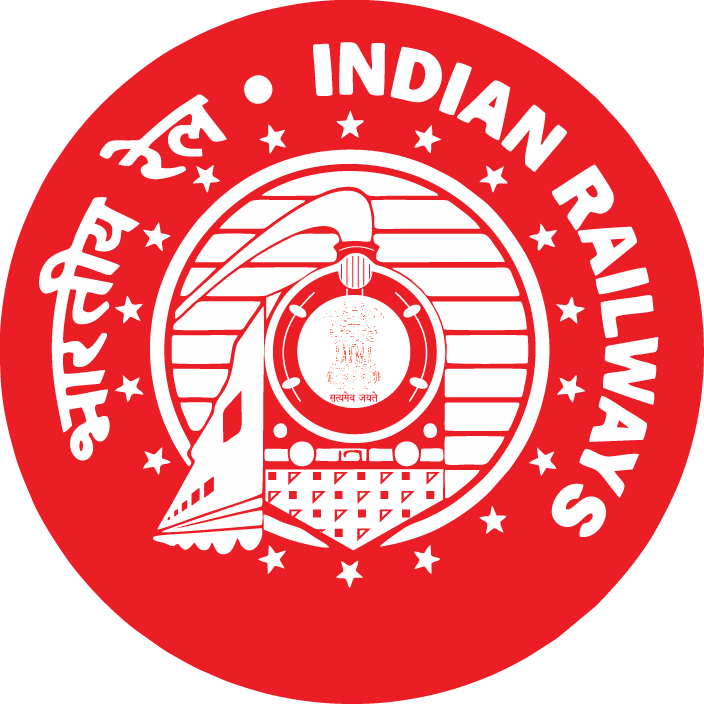 I buy a ticket for Indian Railways Punjab Mail train 2138, coach AS2, seat 25, lower berth, for ₹1,028/-. We depart Jhansi Junction railway station at 12:20pm, and head southwest toward Mumbia for 1,135 kilometers. We arrive to Chhatrapati Shivaji Terminus railway station around 6:00am the next mornin.
I buy a ticket for Indian Railways Punjab Mail train 2138, coach AS2, seat 25, lower berth, for ₹1,028/-. We depart Jhansi Junction railway station at 12:20pm, and head southwest toward Mumbia for 1,135 kilometers. We arrive to Chhatrapati Shivaji Terminus railway station around 6:00am the next mornin.
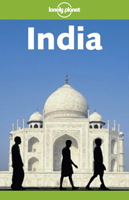
Sunday, 8 Aug — Bombay
Great city and home to Bollywood— the largest movie maker on Earth. Indian movies are filled with hit Bollywood songs played the country over and I instantly become a fan of the wailing tunes. Their infectious grooves make everyone want to dance; but all of the singers sound identical. Anyway, Mumbai awaits, and I proceed without care…
It is a serene day out as I walk about the colonial section of Mumbai. The monsoon rain has temporarily let up and the sun is steaming the landscape dry. I am reveling in the urban landscape, thankful to be back in civilization after two months in the South-Asian wilderness. Mumbai is the most cosmopolitan city in India, which really isn’t saying much because much of the rest of the country seems stuck in mid-19th century. Anyhow, I am thrilled, really, as there are cafes everywhere, bars, museums, galleries, and sophisticated Indians all minding their own business. My plan is to tour town and end up on the ocean drive for sunset. I am digging life as I look right and cross the ONE-WAY street blocking my path; all systems are go…
The noise to my left instantly redirects my attention to the present: SCREEEEECH!! My thoughts of, “Oh shit, this isn’t a ONE-WAY street!” are quite accurate when I am suddenly on the hood of a taxi. TAG! The car, skidding to quick stop, does stop, but not Brian— he continues on through the air and lands on the street with inertia that flops him about. As in all near-death experiences, this is when temporary enlightment arrives. Time suddenly slows down and I instantly realize that the stresses of India have taken their toll and that I need to start enjoying myself again. The previous week has especially been rough, after all, my chance meeting with The Dead Person didn’t go too smoothly, and the food poisoning in Orccha hit a sour note as well: I no longer can enjoy Indian food. All too soon, though, I am jolted from this awakening when I realize that I am not unconscious and that about 500 concerned Indians are staring at me while I try to regain my balance in the middle of one of India’s busiest street. I quickly get to my feet and publicly shake the hand of the taxi driver, knowing that drivers who hit people are suddenly the attention of social justice and may get beat up by the witnesses of the accident. This accident, being the fault of my own stupidity, does not want to be compounded with the karma of someone getting their arse kicked on my account. The public takes heed and the hordes all focus on me as the taxi drives away.
I soon realize the result of a highly focused, 15 MPH charlie-horse punch to the leg from the fender of the taxi is manifesting in the form of severe pain. My right leg hurts like hell. Nothing looks broken from the outside, but I suddenly wonder about internal bleeding as my peripheral vision begins to fade. I lay down on a bench outside an American Express office and take some deep breaths. A courteous official dressed in colonial security garb wobbles his head and informs, “Sir, there is no laying on this bench… ”
“I’m a fucking American, and this is American Express!” I exclaim, wobbling my head back at him and massaging my aching leg, still laying. Finally I succumb to the peon’s wishes and think like an athlete: I will walk this off. As I walk away, the entire town applauds but I have to admit, the pain is getting worse and hampers my proper decision making. I abort all sunset walk plans and head back to my hotel in the first taxi that comes my way. Suddenly five hawks are competing for my taxi business, so I take the closest cab and we speed away. The hotel staff are cooperative, and as I lay in my bed, icing my leg, I manage to break the all-time high-score on my computerized Yahtzee unit: 511. (Sorry Lisa.) I soon realize that I am OK and lucky as heck to have survived the collision mostly unscathed. I thank the heavens and the Gods and Buddha and Ganesh (the Hindu God of journey) and everyone else that I, for the rest of the time, have had so little faith in. But now I give earnest prayer. AMEN. I also have a neat trophy in the form of a grapefruit sized bruise on my leg.
What a week! First The Dead Person, then food poisoning, and now the TAG! Ouch. India— you are asking a lot… Am I ready for a week in Goa, or what?
Thursday, 12 Aug — Goa
What a beautiful place! Wrong season, but I feel the potential. It rains most of the time, but that is no problem. Michele’s parents have kicked-down a fat time-share and we are enjoying our time in 4-star luxury complete with swimming pools, ping-pong, lobster dinners and Indian BINGo. The beaches are sandy and we swim and rejoice. Suddenly Saturday check-out rolls around and we reluctantly leave our rooms and rail it ever furthur down the tip of India.
Saturday, 21 Aug — Kerala
Kerala (or Kurdala if you are Jonathan Gordon) is beautiful, just beautiful, and we enjoy it to the max. We treat ourselves to a two-night rice barge tour of the backwaters. Rice barge is an understatement: this baby is an 80-foot floatel, complete with our own private captain, engine boy and chef. We dine under the stars and toast the coming autumn with gallons of beer and bushels of cashews. Only wish Kim was there instead of these pesky mosquitos gnawing my forehead to shreds. Good thing I started a course of Malarone.
Monday, 23 Aug — Trivandrum
Trivandrum is supposed to be ‘one of the more pleasant cities in India’ and I am excited. Instead, I am treated to the usual: Men, over-anxious rickshaw drivers, honks and horns, horns, horns, speakers distorting music at volume level 11, trash, urine smell and chaos. I can’t take it anymore.
“Need a ride, Mister?” asks one guy who beeps his horn at me while I cross the street.
“Fuck off!” I think back.
“Myyy friend, my frieeend?” someone else yells.
“Go away.” I respond.
I really can’t take it. Every time I go outside, I get angry. By this time, the world of India has taken its toll. I am sick of horns, litter, trash, rain, mud, urine, smell, and ornery pot-bellied, tank-topped, mustached, stinky men. I am so sick of it.
I find a shiny new hotel room and decide to spend a couple of days resting in seclusion. What I do is hole up in my hotel room and watch the Olympics for three days. Things seem better. The hotel staff, constantly knocking on my door, are a bit of a bother, but I ignore them. China is on something like Gold Medal 24 when I realize that India, although representing 1/6th of humanity, has won no gold. Ultimately, they walk with only one silver. Unbelievalbe. After such a poor preformance, I am now completely pissed-off with India. India sucks. Well, it just goes to show you, when you don’t invest in your people and country, you don’t get results. I decide that India is the poorest, most corrupt, pathetic excuse for a nation that I have ever seen. I hate the place and the culture and am alarmed that these people are taking no steps to curb their population. It scares me. I have never invested so much time in a country and despise it so much. Get me the hell out.
I walk to Spensers Travel Limited and book a ticket to Colombo, Sri Lanka. The agent informs me all economy seats are taken on Sri Lankan Airlines and that I must buy a business class seat. The price, at ₹4,970/-, is still less then $100 USD for the front of the plane, so I agree. (When I get on the plane a few days later, I am the only one in business class, and half the seats in economy are empty.)
My coughs starts here. Cough, cough.
Thursday, 26 Aug — Varkala
 I decide to train it down to the southern-most city in India. I buy a ticket for Indian Railways superfast train 4905 for ₹35/-. We depart Trivandrum Central railway station head northwest toward Varkala. We arrive to Varkala Sivagiri railway station about 40 minutes later.
I decide to train it down to the southern-most city in India. I buy a ticket for Indian Railways superfast train 4905 for ₹35/-. We depart Trivandrum Central railway station head northwest toward Varkala. We arrive to Varkala Sivagiri railway station about 40 minutes later.
During my train ride, I am accosted by multiple chai wallahs. They don’t bother me at first, but being in the climax of my book The Davinci Code, my patience soon sours.
“Sir, chai?”
“No, thank you.”
“Sir, coffee?”
“Coffee? No, thank you.”
“Sir, chai?”
“No.”
“Sir, coffee?”
“No.”
“Sir, chai?”
“No.”
“Sir, coffee?”
“No.”
“Sir, chai?”
“No.”
“Sir, coffee?”
“No.”
“Sir, chai?”
“No.”
“Sir, coffee?”
“No.”
“Sir, chai?”
“No.”
“Sir, coffee?”
Finally, I break. I grab one wallah by the shirt collar and push him against the door. His eyes widen.
“Don’t fucking offer me one more measly chai or I will break your chai kettle!” I exclaim.
I can’t believe that I just do this. The whole trains stares at me. One woman laughs, but not at me, more with me. She knows, as I do, that this place is nuts. She laughs again and it’s all she can do. She knows that she is stuck here, and that I can pull the emergency exit whenever I want and jet out. Feeling victorious yet defeated, I sit down, and continue reading. I can’t help but feel like the white elephant in the room. But at least no one offers me anything else. Hallelujah!
Varkala is beautiful town on bluffs overlooking the Arabian Sea. There are many tourists and locals mixing around buying, selling and enjoying the fresh air.
At the end of the day, I take the train back to Trivandrum.
PS: Looking back on India now, several months later, I notice the frustrations have faded and the good memories have stayed. India, you are one out-of-this-world place; and I thank you for challenging all that I know and showing me one wild and wacky adventure after another. I miss you.
Group Emailmania
Lots of people have been asking “about India” and “where are you?” Trust me, I’ve been trying to compose this email for weeks, but every time I attempt to word my India experience, I get stuck. Simply nothing written can convey what I witnessed there well enough to send out to you all. So instead I will pass this long and lousy alternative and hope for the best. This baby is detailed, so print it out and read it at work. Good luck deciphering…
The concept of yin and yang— the balance between good and bad or light and dark— may have evolved in China and the East, but it is no where as present as in India. For me, India was the full package, and like yin and yang, I loved it and I despised it. The contrasts I saw enlightened, consumed, overwhelmed and often frustrated my psyche, and they ultimately chewed me up and spat me back to Thailand for refuge. My brief visit encountered spiritual hedonism and utter desperation, gluttonous celebration and dire starvation, pinnacle mountains gleaming like diamonds above polluted cesspits ruthlessly poisoning the land, water and its people; and frankly, I have no neutral feeling about any of it.
I guess you could say that I had unfairly high expectations for India. It was, after all, the crown jewel of this journey, the keystone of my Asian experience, and the reason why I left a good job and comfortable life in San Francisco. Stories that others had told, food that I tried at home, music that I grew to love, and photos from National Geographic all lead me to the conclusion that India was going to be one great place with holy gurus stalking the streets, with sitar and tabla players rhyming away, with Nag Champa incense filling the air and with magic carpet rides to pristine lakes and mountain retreats. And so when I arrived to India on that fateful June day in 2004, I was expecting a lot. Boy, was I right-on, and, oh boy, was I wrong-off.
The good times are obvious: Traveling in some of the most exotic lands on Earth with great friends and witnessing the relics of ancient civilization melding with modern life (ox-carts would compete for street space with sports cars.) Together we sampled the delights of Indian cuisine: saag paneer, vegetable jal fresi, lassi yum-yum (and together we shat it back out again.) We explored the Himalayas and Tibetan culture and cruised rice barges through backwaters and green fields forever. Yet mixed in with all these high times are the shadows seeping through, grabbing, honking, corrupting and smelling at any given chance. Although the bad feelings are less defined than the good, I will try and explain both now.
Ultimately, though, my India experience is vital for me, and I am thankful to have seen her in all her majesty and pain. Grasping 1/6 of the world in two months is a lot, probably too much, but maybe, just maybe one day my desires will supersede my apprehensions and I will use my 10-year, multiple-entry Indian visa one more time. Holy Cow!
